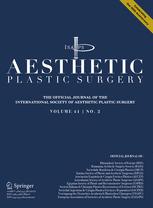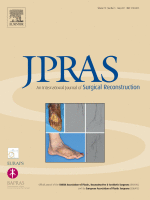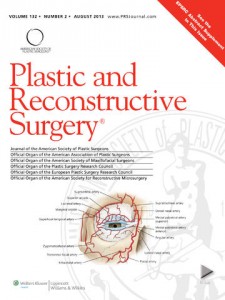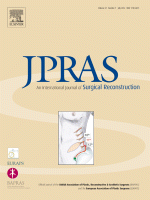Ventura, O.
Cir. plást. iberolatinoam. vol.43, no.1. ene./mar. 2016. pp.3-10
 La mama con disminución de volumen y ptósica requiere un procedimiento doble que consiste, en la mayoría de los casos, en aumento con implante y ajuste de los tejidos al nuevo tamaño. Esta es una realidad que sienten los cirujanos plásticos con experiencia y mucho más aquellos que comienzan a transitar por la especialidad.
La mama con disminución de volumen y ptósica requiere un procedimiento doble que consiste, en la mayoría de los casos, en aumento con implante y ajuste de los tejidos al nuevo tamaño. Esta es una realidad que sienten los cirujanos plásticos con experiencia y mucho más aquellos que comienzan a transitar por la especialidad.
En mamas ptósicas que requieren aumento, el volumen añadido de la prótesis puede cambiar los requerimientos de escisión cutánea, causando inconvenientes si se ha calculado mal la superficie desepidermizada o generando lógicas dudas entre una pexia con técnica periareolar o una periareolo-vertical.
 Aesthetic breast area improvements for gynecomastia and gender dysphoria patients who seek a more masculine appearance have increased recently. We present our clinical experience in breast masculinization and a classification for these patients.
Aesthetic breast area improvements for gynecomastia and gender dysphoria patients who seek a more masculine appearance have increased recently. We present our clinical experience in breast masculinization and a classification for these patients. The increasing variety of breast implants has led to their classification into «profile» types to guide implant cataloguing and selection. Implant «profile» describes the overall silhouette of the implant. It represents a permutation of all 3 dimensions of the implant: base diameter, projection, and volume. Implant «profile» is not the same as implant projection. Implant projection is a quantifiable linear measurement of the anterior-posterior dimension of the implant, whereas implant «profile» is a vendor-driven assessment that currently lacks universal standardization. Until «profile» assessments are standardized across vendors, it behooves us to be cognizant of their limitations as primary variables used to guide implant selection.
The increasing variety of breast implants has led to their classification into «profile» types to guide implant cataloguing and selection. Implant «profile» describes the overall silhouette of the implant. It represents a permutation of all 3 dimensions of the implant: base diameter, projection, and volume. Implant «profile» is not the same as implant projection. Implant projection is a quantifiable linear measurement of the anterior-posterior dimension of the implant, whereas implant «profile» is a vendor-driven assessment that currently lacks universal standardization. Until «profile» assessments are standardized across vendors, it behooves us to be cognizant of their limitations as primary variables used to guide implant selection. Breast implants and, more recently, autologous fat grafting are the two most common treatments used to correct tuberous breast deformity (TBD). The post-surgical quality of life between the two techniques is not well demonstrated. This study aimed to compare satisfaction and health-related quality of life in patients affected by TBD between these two techniques.
Breast implants and, more recently, autologous fat grafting are the two most common treatments used to correct tuberous breast deformity (TBD). The post-surgical quality of life between the two techniques is not well demonstrated. This study aimed to compare satisfaction and health-related quality of life in patients affected by TBD between these two techniques. Breast implant–associated anaplastic large cell lymphoma (ALCL) is a distinctive type of T-cell lymphoma that arises around breast implants. Although rare, all cases with adequate history have involved a textured breast implant. The objective of this study was to determine the U.S. incidence and lifetime prevalence of breast implant–associated ALCL in women with textured breast implants.
Breast implant–associated anaplastic large cell lymphoma (ALCL) is a distinctive type of T-cell lymphoma that arises around breast implants. Although rare, all cases with adequate history have involved a textured breast implant. The objective of this study was to determine the U.S. incidence and lifetime prevalence of breast implant–associated ALCL in women with textured breast implants. Numerous surgical techniques exist for gynaecomastia treatment. Although ultrasound-assisted liposuction (UAL) is thought to be more effective than conventional liposuction, to date there remains no objective and direct comparison of the two modalities. Hence, a comparative study was performed of a single surgeon’s experience over 13 years using two definitive parameters, namely intraoperative conversion to open excision and postoperative revisional surgery rates.
Numerous surgical techniques exist for gynaecomastia treatment. Although ultrasound-assisted liposuction (UAL) is thought to be more effective than conventional liposuction, to date there remains no objective and direct comparison of the two modalities. Hence, a comparative study was performed of a single surgeon’s experience over 13 years using two definitive parameters, namely intraoperative conversion to open excision and postoperative revisional surgery rates.






 Sitio web publicado el
Sitio web publicado el
Los lectores comentan